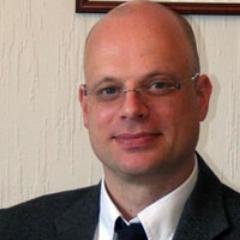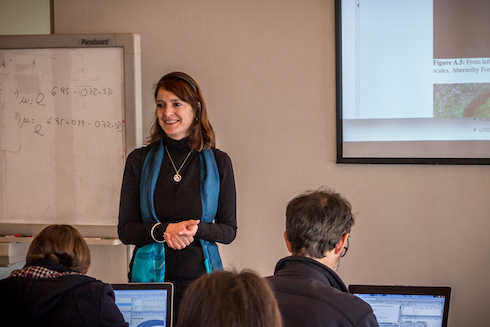Dr Alain F Zuur
I was born 2 years before man landed on the moon. When I went to high school, I was not good in much except for mathematics and sport. The nice part about mathematics is that you either ‘see it’ or you don’t. Tears for those who don’t; unlimited opportunities for those who do!
I went to university in Groningen, which is in The Netherlands. Life is sometimes directed by chance. A guy named ‘Duurt’ once gave me a ride to the bus station. Even in Dutch ‘Duurt’ is a funny name! Just 3 seconds before the bus arrived, Duurt shouted, ‘Why don’t you try NIOZ for a traineeship; biology is fun!’ I hadn’t fancied biology much in high school. Still, I decided to give it a chance. I took a 4-hour bus trip from Groningen to the island of Texel and knocked on the door of The Netherlands Institute for Sea Research: ‘Anyone interested in a mathematician looking for a traineeship?’
I ended up working with some nice folks at NIOZ and they even funded my PhD. I was based in Aberdeen (Scotland) while doing my PhD. The PhD itself was a huge learning curve. Everything I learned at university didn’t work for biological data. ARMA models? Waste of time. Fourier analysis? Come back in 500 years. PCA? Doesn’t work.
After finishing my PhD in the millennium year, I got a job at the Marine Laboratory in Aberdeen. Not that I fancy Aberdeen, but its surroundings are beautiful. At the Marine Lab the learning curve was even steeper. People came to my office with complicated designs and expected an answer by yesterday. My line manager at the lab made the catastrophic mistake of allowing me to do a ‘homer’, a private consultancy job. What started with one ‘homer’ quickly became multiple ‘homers’, including statistics courses. After a (short) while this became a second full-time job, so in the year that Dr Who 
returned on the BBC it was ‘adios’ and I started to work full-time for my own business, Highland Statistics. Core business activities are teaching courses, writing books (and the occasional paper), and consultancy.
Together with my colleague, Elena Ieno, Highland Statistics runs 20–25 statistics courses (covering a wide range of topics) per year. This sounds like a lot but some of these courses are in very (!) nice places. We wrote three books with Springer, and when we got stuck in Northern Europe because of a volcanic eruption we decided to write a ‘Beginner’s Guide to …’ book series as self-publishing authors. That ‘self-publishing’ means paying statistical referees, editors, printing companies, artists, etc. But the best referees were our course participants who asked 10+ questions about every paragraph that we wrote. Writing these books and running these courses makes me feel that I never stopped my PhD work. Virtually every month there are new statistical methods and new packages in R that are relevant.
Since 2017, my wife Nandani and I are the proud parents of twins Aidan and Naila. Having twins hasn’t slowed me down. Most of the books were written at airports and up in the sky ... and between nap times and feedings!

Dr. Elena N. Ieno
Elena is a senior marine biologist with over 15 years of experience in teaching statistics to biologists and environmental scientists. Shortly after finishing her postdoc at the University of Aberdeen (United Kingdom), she left academia to work full-time as a statistics instructor and has shown she can bridge the gap between the two disciplines and dispel the dread of statistics often experienced by biologists.
Elena has authored and co-authored 10 books on the analysis of ecological data and she has also written two case study chapters on the analysis of time series applied to environmental indices and forensic entomology.
Elena lives in a sunny area along the Spanish Mediterranean coast of Alicante and shares her life with an enthusiastic chemist, Walter.

Dr Elena Ieno (bio@highstat.com) teaching in Darwin, Australia.